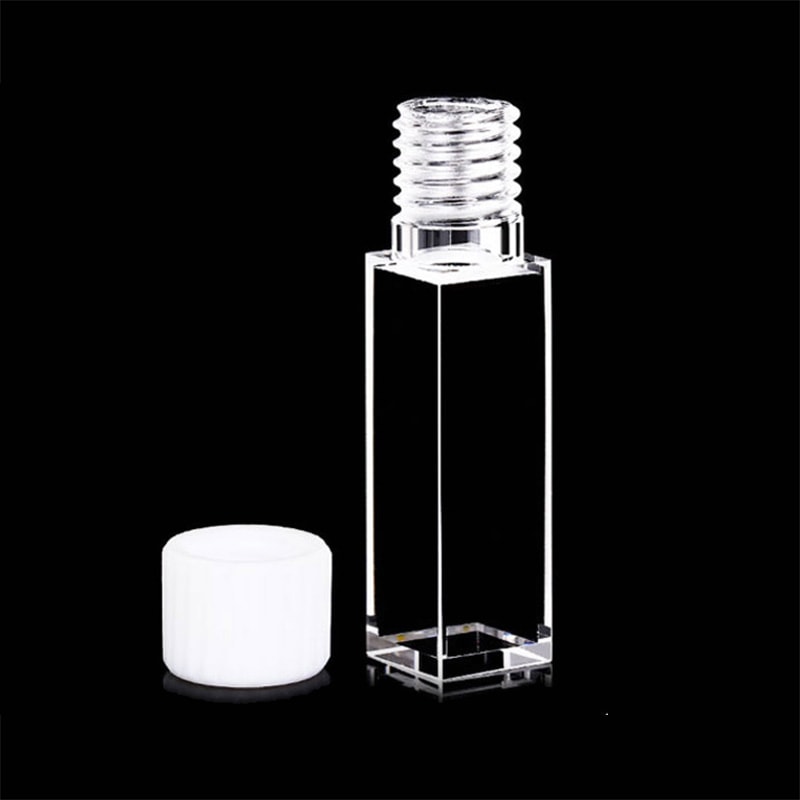Spectrophotometry is an essential element of scientific research and a technique that reveals the mysteries of light absorption and transmittance at specific wavelengths. At its heart lies the cuvette, a simple but essential vessel that stores samples for analysis. They may seem simple, but their design intricate details, from cuvette length to the material selection provide the key to unlocking precise results on substance concentration and its purity. Let’s explore this fascinating universe where the dimensions and cuvette size affect the outcomes of every test.

Image credit: cuvet.co
The Power of Cuvette Path Length
Imagine a light beam traversing a sample. What happens is largely dependent on the length of the cuvette’s path which is the length of time light traverses through the liquid. A standard 1cm path length cuvette can be the preferred choice for many laboratories, and is able to strike a balance between sensibility and practicality. Why is this important? The longer the path of light is, the higher the amount of light being absorbed. So, the signal will be amplified when using sample that is diluted. For concentrated solutions such as protein or nucleic acids, a short pathway length could alter the way you play. This technique reduces the amount of dilution that is required, saving precious samples and cutting down on preparation times. What is the takeaway? Achieving the right match between path length and the requirements of the sample is an art art that enhances the reliability of your sample.
Cuvette Size and Dimensions More Than What Meets the Eye
Cuvette size isn’t just about how much liquid fits inside it’s about how the vessel interacts with the spectrophotometer. They are available in a variety of volumes and shapes that are suited to specific needs. Semi-micro cuvettes are smaller in size but have more robust walls. They are perfect for samples with small volumes. The thicker walls decrease the volume inside and allow light to flow through without losing any drops. Compare this with a standard cuvette, and the distinction is clear less pipetting steps, less room for error and results that stand against scrutiny. This clever trick proves that the size of a cuvette isn’t only a number, but an approach.
The 1cm Path Length Cuvette A Lab Favorite
What’s the reason that the 1cm cuvette path length is so popularly used for experiments? This is the perfect spot to conduct biological tests, where every milliliter is important. This traditional design provides consistent absorbance readings without overwhelming the detector, making it ideal for everything from DNA purity tests to enzyme assays. It’s not a single-size model. You can swap it for another cuvette that has a different length of path or shape, such as one intended to study emission, and the data can skew widely. Precision relies on selecting the correct tool, not just the most familiar one. A cuvette that is not matched to the right one is like an instrument that has been tuned wrong, but not completely right.
Material Matters that go beyond Size and Path
Cuvette dimensions are only half of the tale. The selection of the material is the final piece. Glass and quartz cuvettes are notable for their high transmission rates and allow light to flow through without interference. They’re strong, durable and suitable for demanding spectroscopy tasks. Plastic cuvettes are also affordable and convenient. There’s no requirement for clean-up or cross-contamination. Simply take the cuvettes and dispose. They’re ideal to conduct quick DNA or test for RNA as well as aqueous solution. The cost? The trade-off? This is a classic case of purpose, dictating quartz for the purists, plastic for the pragmatist.
Perfect Practice and Precision
Cuvettes are versatile and adaptable. Spacers in combination with short lengths of the path allow for the handling of samples that are concentrated while larger vessels can handle large amounts. The clarity of results is dependent on the length of the path, the size and the material utilized. Labs are measuring one of the most rare proteins. A semi-micro cuvette which has a shorter pathway could prevent dilution headaches and give precise results in a short time. Contrast that with a reckless change of cuvettes in middle of an experiment, and you’ll see numbers fall. The smallest of details can have the greatest impact in spectrophotometry.
Cuvettes might be small, but their significance is huge. From the 1cm length cuvette up to custom dimensions they bridge the gap between sample and knowledge. The right cuvette could transform a good measurement, regardless of whether you’re seeking purity or concentration or both, into an excellent measurement.